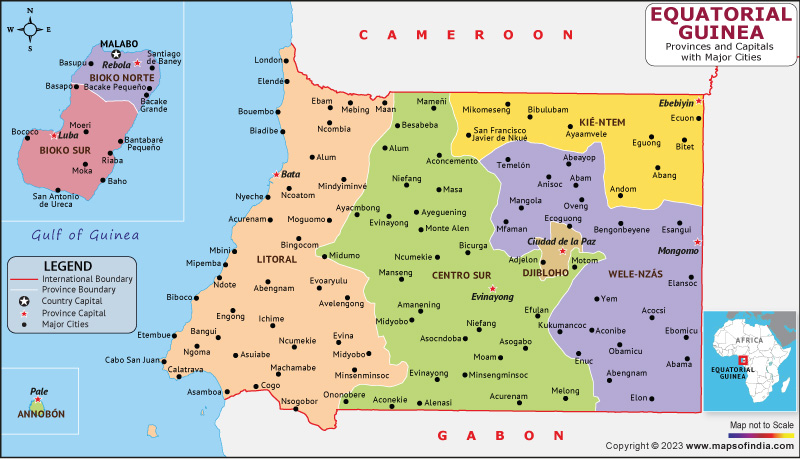Equatorial Guinea is a tiny nation situated on the western coast of Central Africa. With a population of approximately 1.4 million people, it is one of the smallest countries on the continent.
History:
The region that is now Equatorial Guinea was inhabited by a variety of indigenous peoples for thousands of years before the arrival of European explorers in the late 15th century. The country was colonized by Spain in the 18th and 19th centuries and gained independence in 1968.
Since independence, Equatorial Guinea has been ruled by a succession of authoritarian leaders, including Francisco Macías Nguema, who ruled from 1968 until he was overthrown in a military coup in 1979 by his nephew, Teodoro Obiang Nguema Mbasogo. Obiang has ruled the country ever since, with a poor human rights record and accusations of corruption.
Culture:
Equatorial Guinea has a diverse and vibrant culture that is influenced by its African, Spanish, and French colonial heritage. The country is home to several indigenous ethnic groups, including the Fang, Bubi, and Ndowe peoples, each with their own unique cultural traditions.
Music and dance are an important part of Equatoguinean culture, with traditional styles like makossa, soukous, and zouk being popular. The country is also known for its colorful festivals and celebrations, such as the Bubi Festival of Masks, which features traditional dances and music.
Language:
The primary languages of the nation are French, Spanish, and Portuguese, which are used in official communication, education, and the media.
Geography:
Equatorial Guinea is situated on the western coast of the Central African portion of the African Continent. It is bordered by Cameroon to the northern front and Gabon to the southern front and eastern front. The country consists of two main parts: the mainland region, known as Rio Muni, and the island region, which includes the island of Bioko and several smaller islands.
| Official Name | Republic of Equatorial Guinea |
| Capital | Malabo |
| Population | 1679172 |
| Area | 28,050 km2 |
| Currency | Central African Franc |
| Religion | Christianity |
| Language | Spanish, French, English |
| Major Cities | Malabo, Ebebiyin, Luba |
FAQs
Q1: What is Equatorial Guinea's economy based on?
Equatorial Guinea has a small, but rapidly growing economy that is primarily based on its vast reserves of oil and natural gas. The country is the third-largest oil producer in Sub-Saharan Africa, and oil exports account for over 80% of its total export revenues.
Q2: What is the education system like in Equatorial Guinea?
The education system in Equatorial Guinea is still developing, with literacy rates estimated to be around 94%. Education is compulsory for children aged 6 to 14, and the country has made significant investments in recent years to improve its education infrastructure.
Q3: What is the traditional cuisine of Equatorial Guinea?
The traditional cuisine of Equatorial Guinea is diverse and reflects its cultural heritage. Some popular dishes include fish and seafood stews, roasted meats, plantains, cassava, and yams. Spices like ginger, garlic, and chili peppers are commonly used to add flavor to dishes.
Q4: What are some popular tourist attractions in Equatorial Guinea?
Equatorial Guinea is still developing its tourism industry, but there are several attractions that draw visitors to the country. Some popular destinations include the beaches of Malabo and Bata, the rainforests of Monte Alen National Park, and the colonial architecture of the city of Santa Isabel.
Last Updated on: June 11, 2025
